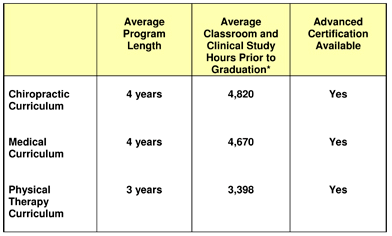What is Chiropractic?
Chiropractic care: Doctors of Chiropractic are non-surgical spine specialists who assess and manage patients with neuromusculoskeletal disorders and related clinical conditions including but not finite to, back pain, neck pain, headaches, and extremity complaints. When addressing patients’ needs, DC’s utilize appropriate diagnostic procedures and conservative therapeutic interventions, with a primary focus on spinal and extremity manipulation.
Although by a discussion of the problem and physical examination mostly cases will solve. Also, chiropractors utilize blood tests, MRI, CT Scans, X rays, and other diagnostic tests when necessary. As with other health care disciplines, chiropractic is carrying out to accountability and predictability in obtaining measurable outcomes. These would include but are not lean to pain, physical function, and patient satisfaction.
Chiropractic Education
Educational requirements for doctors of chiropractic are among the most stringent of any of the health care professions.
 The typical applicant at a chiropractic college has already acquired nearly four years of a pre-medical undergraduate college education. Including courses in biology, inorganic and organic chemistry, physics, psychology, and lab work. Once accepted into an accredited chiropractic college, the requirements become even more demanding. Four to five academic years of professional study are the standard. Because of the hands-on nature of chiropractic, and the intricate adjusting techniques, a significant portion of time is spent in clinical training.
The typical applicant at a chiropractic college has already acquired nearly four years of a pre-medical undergraduate college education. Including courses in biology, inorganic and organic chemistry, physics, psychology, and lab work. Once accepted into an accredited chiropractic college, the requirements become even more demanding. Four to five academic years of professional study are the standard. Because of the hands-on nature of chiropractic, and the intricate adjusting techniques, a significant portion of time is spent in clinical training.
Doctors of chiropractic
who are allow to practice in all 50 states, the District of Columbia, and in many nations around the world — undergo a rigorous education in the healing sciences, similar to that of medical doctors.
Doctors of chiropractic must pass national board examinations and become state-licensed. Chiropractic colleges also offer post-graduate continuing education programs in specialty fields ranging from sports injuries and occupational health to orthopedics and neurology. These programs allow chiropractors to specialize in a healthcare discipline or meet state re-licensure requirements.
What Conditions do Chiropractors Treat?
- Low Back Pain
- Neck pain
- Headaches
- Extremity Pain
- Athletic Injuries
- Bursitis
- Car Accident Injuries
- Elbow Pain
- Fibromyalgia
- Foot & Ankle Pain
- Hip Pain
- Knee Pain
- Sciatica
- Scoliosis
- Sprains & Strains
- Tennis Elbow
- Carpal Tunnel Syndrome
- Muscle Spasms, Tightness & Tension
- Pain and/or Numbness or Tingling in the Extremities
- Plantar Fasciitis
- Rib Problems
- Rotator Cuff Conditions
- Shin Splints
- Shoulder Pain
- Spinal Disc Problems
- Thoracic Outlet Syndrome
- TMJ Disorder
- Whiplash
- Work Comp Injuries
- Wrist & Hand Pain
- and much more.
![]()